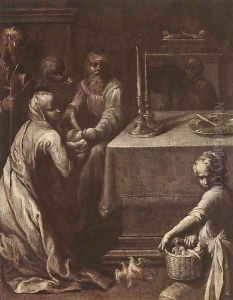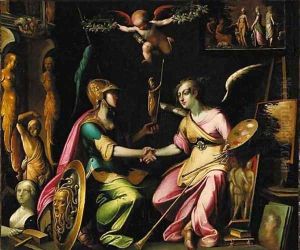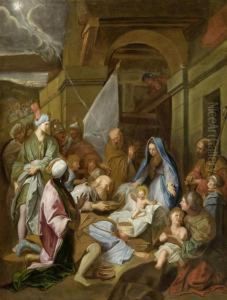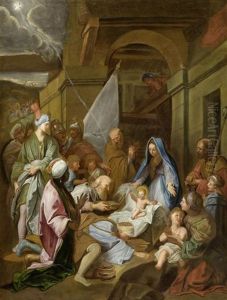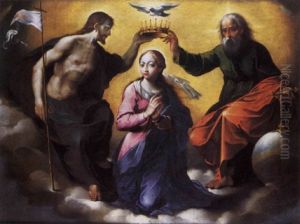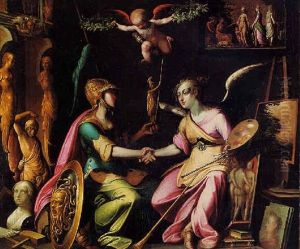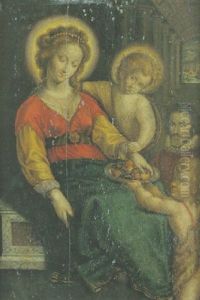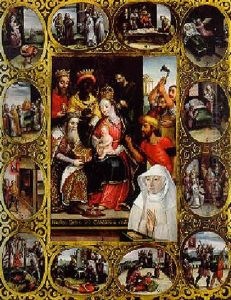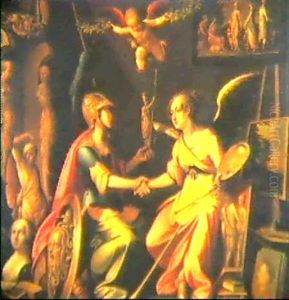Quentin Varin Paintings
Quentin Varin was a French painter born in 1570 in Amiens, France. Not much is known about his early life, but he is recognized for his work during the late 16th and early 17th centuries. Varin's artistic career is noted mainly for his role as a master to Nicolas Poussin, one of the leading painters of the French Baroque style.
Varin's work was characteristic of the Mannerist style, which was prevalent at the end of the Renaissance. This style is known for its artificiality, elegance, and a focus on the idealization of the human form. He painted primarily religious subjects, which was common among artists of his time, due to the influence of the Catholic Church as a major patron of the arts.
Unfortunately, very few of Varin's works have survived or been identified with certainty, which makes it difficult for art historians to fully assess his style and influence. What is clear, however, is his influence on Poussin. Varin was reportedly working in Les Andelys, Normandy, when the young Poussin became his apprentice. This apprenticeship likely took place around 1612, and it was during this time that Poussin would have learned the basics of painting before later moving to Paris and then Rome to further his career.
Varin's career reflects the transitional nature of European art as it moved from the late Renaissance into the early Baroque period. His work would have been a bridge between the older styles of the 16th century and the new dynamism that characterized the 17th century.
Quentin Varin passed away in 1634. While his own artistic legacy may not be as richly documented or celebrated as that of his famous pupil, his role in the development of one of France's most important artists of the Baroque era remains his most enduring contribution to the history of art.
